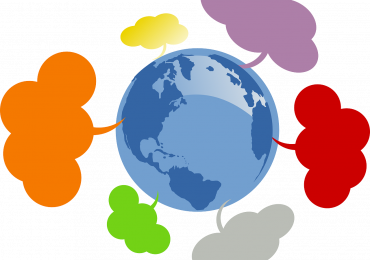One of the critical challenges that the climate crisis brings is managing scarce resources, most notably water. Droughts, storms and floods are all expected to increase in all global warming scenarios – massively, if carbon emissions do not fall quickly enough.
Around 2 billion people around the world lack access to safe drinking water and 40 per cent of the world’s population are affected by water scarcity. Agriculture accounts for some 70% of water usage and more than 90 per cent of disasters are water-related. Demand for water keeps growing, with pressure on freshwater projected to increase by more than 40 per cent by 2050.
The UN Water Conference in March, the first for five decades, developed the Water Action Agenda: more than 700 commitments to address the water and sanitation crisis and ensure equitable access to water and sanitation – Sustainable Development Goal 6. It also announced the appointment of a Special Envoy on Water.
UN member states committed to spending more on critical infrastructure. The US is committing to $49 billion investment to support climate-resilient water and sanitation infrastructure and services; the German government is working with the Niger Basin Authority on a £21 billion project; the EU will provide €20 million funding to accelerate the deployment of wastewater surveillance for COVID-19.
The PR release claims key game-changers: reinforcing water’s place as a fundamental human right; reducing the pressures on the hydrological system; developing new, alternative food systems to reduce the unsustainable use of water in food production and agriculture; designing and implementing a new global water information system to guide plans and priorities by 2030.
But is this sufficient?
The World Economic Forum argued that developing a system of accountability, as has been done with climate change, will be critical. The world’s ‘financial plumbing’ needs to be fixed, so that funding flows from global capital markets to small enterprises and communities working to tackle water shortages. At the current rate of progress, by 2030, 1.6 billion people will still lack access to safe drinking water and 2.8 billion will lack safe sanitation. A four-fold increase in progress is required.
As well as an SDG in its own right, water is an issue connecting all 17 SDGs. Collective action bringing together governments, multinationals and their whole supply chains and NGOs is essential. A water “Net-Zero” moment.
Others argued that non-binding commitments, paucity of scientific data and poor representation of global south left a lot to be desired at summit. Several issues were identified:
- Lack of co-ordination: the various commitments are disparate and uncoordinated and will further fracture an already fragmented sector and occupy political space on water without unlocking substantive progress
- Accountability: the commitments, being non-binding, won’t result in cohesive action; transparent reporting from world governments, the business community, and financial institutions is needed, as well as greater levels of targeted aid, financial and policy reform
- Rigour: the process lacks coherent analysis; the water crisis warrants its own scientific panel / commission, akin to the Intergovernmental Panel on Climate Change, to review progress, resolve controversies and channel rigorous evidence to decision makers.
- Inclusiveness: action should be informed by the realities and voices of those most affected. It must be based on reliable knowledge, evidence of what works, and the lessons of the past four decades of effort.
- Institutions: In addition to the new United Nations’ water envoy, a UN Convention on Sustainable and Equitable Water Use is needed; this transnational water governance regime would set ground rules, arbitrate fair water use, and to bolster authority, transparency, accountability and participation at regional, national, and local scales
A particular set of initiatives, on a more local scale, is the Portuguese contribution to the Venice Biennalle International Architecture Exhibition this year – “Fertile Futures”. This aims to stimulate thought about a fertile, sustainable and equitable future of water.
Their exhibition consists of seven case studies of man-made impacts on natural and finite water resources, chosen to demonstrate various strategies for the management, preservation, and transformation of fresh water. It explores architecture’s contribution to redesigning a decarbonised, decolonised and collaborative future in cooperation across disciplines, generations and species – with the aim of building shared knowledge.
It is clear that the challenges of water management in the future are considerable. And that it underpins so many aspects of life. In a fractured geo-political situation, getting global consensus will be difficult, just as it is for climate change issues in general, but as such a critical issue for every country major efforts need to be made.
Written by Huw Williams, SAMI Principal
The views expressed are those of the author(s) and not necessarily of SAMI Consulting.
Achieve more by understanding what the future may bring. We bring skills developed over thirty years of international and national projects to create actionable, transformative strategy. Futures, foresight and scenario planning to make robust decisions in uncertain times. Find out more at www.samiconsulting.co.uk.
If you enjoyed this blog from SAMI Consulting, the home of scenario planning, please sign up for our monthly newsletter at newreader@samiconsulting.co.uk and/or browse our website at https://www.samiconsulting.co.uk


